Discovering the perfect Supply Side Platform (SSP) can feel like embarking on a thrilling quest filled with countless possibilities. In a world teeming with diverse SSP options, selecting one at random would be like navigating through a labyrinth blindfolded – not the best strategy, to say the least. Instead, the key lies in unearthing the ultimate SSP that aligns seamlessly with your unique needs, enabling you to unlock the untapped potential of your ad revenue.
In this article, we will explore the top 15 SSPs for publishers in 2025, providing an in-depth analysis of their features and benefits. By the end of this article, you’ll have a better understanding of these platforms and be able to make an informed decision when choosing the right SSP for your publishing needs.
What is an SSP?
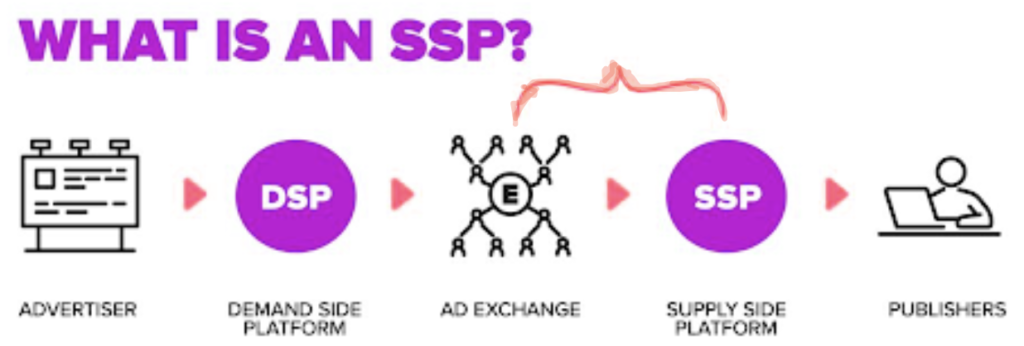
An SSP, or Supply Side Platform, is a technology platform that helps publishers efficiently manage and optimize their ad inventory. It enables publishers to connect to multiple demand sources such as ad exchanges, ad networks, and demand side platforms (DSPs). The primary goal of an SSP is to maximize ad revenue for publishers by automating the process of selling ad impressions.
SSPs provide a centralized interface for publishers to manage their ad inventory, set pricing rules, and control which advertisers can place ads on their websites. They facilitate programmatic advertising by allowing publishers to access a wide range of demand sources and increase their ad fill rates.
One of the key features of an SSP is its ability to streamline the ad-selling process. By automating the selling of ad impressions, publishers can save time and resources that would otherwise be spent on manual negotiations and transactions. This automation allows publishers to focus on creating quality content and engaging with their audience while the SSP takes care of the monetization aspect.
How do Supply Side Platforms work?
SSPs work by integrating with publishers’ websites or mobile apps to gain access to their ad inventory. But how exactly does this process unfold? Let’s dive deeper into the inner workings of SSPs.
When a user visits a publisher’s website, the SSP springs into action. It analyzes the available ad impressions, which are essentially the opportunities to display an ad to the user. These impressions are like little windows of opportunity, waiting to be filled with relevant and engaging advertisements.
Once the SSP has identified the ad impressions, it sends bid requests to multiple demand sources. These demand sources, known as DSPs or Demand Side Platforms, are the advertisers’ gateways to the digital advertising ecosystem. They enable advertisers to bid on ad impressions in real time.
And here’s where the magic happens – the bidding frenzy. Advertisers from various corners of the digital world compete against each other, vying for the opportunity to display their ad to the user. They submit their bids through their DSPs, indicating the maximum amount they are willing to pay for that particular ad impression.
The SSP, armed with its sophisticated algorithms, evaluates these bids with lightning speed. It takes into account a multitude of factors to determine the winning bid. Ad relevancy, user data, and pricing rules set by the publisher all come into play during this evaluation process.
So, what exactly does this mean for the publisher? Well, it ensures that their ad inventory is optimized for maximum revenue generation. The SSP’s algorithms work tirelessly to select the highest bidding ad that aligns with the publisher’s goals and the user’s interests. This ensures that the user is presented with an ad that is not only relevant but also valuable.
But it doesn’t stop there. The entire process, from the user visiting the publisher’s website to the winning ad being displayed, happens in real-time. It often occurs within milliseconds. This real-time bidding, or RTB, allows for dynamic and instantaneous decision-making, ensuring the user is presented with the most relevant and engaging ad that’s out there.
So, the next time you see an ad while browsing a website or using a mobile app, remember that behind the scenes, an SSP is working tirelessly to optimize the ad inventory and deliver a seamless advertising experience for both the publisher and the user.
SSP Features and Benefits
SSPs (Supply-Side Platforms) are powerful tools that offer a wide range of features and benefits, enabling publishers to streamline their ad operations and maximize their revenue potential.
Let’s delve into the key features and advantages that SSPs bring to the table:
1. Ad Inventory Management
One of the fundamental features of SSPs is their ability to provide publishers with robust inventory management tools. These tools empower publishers to organize and categorize their ad inventory efficiently. By having a clear overview of their available ad space, publishers can exercise greater control over which ads are displayed on their websites. This level of control ensures that ads align with the publisher’s brand and target audience, ultimately enhancing the user experience.
2. Real-Time Reporting
SSPs offer publishers detailed and real-time reporting capabilities, providing valuable insights into their ad performance, revenue, and other crucial metrics. Publishers can access comprehensive analytics that enable them to understand how their ads are performing across various dimensions, such as impressions, click-through rates, and conversions. Armed with this data, publishers can make data-driven decisions to optimize their ad strategies and maximize their revenue potential.
3. Yield Optimization
Yield optimization is a critical aspect of ad monetization, and SSPs excel in this area. Leveraging advanced algorithms, SSPs automatically optimize ad inventory to ensure that publishers extract the highest possible revenue from each impression. By dynamically adjusting ad placements, formats, and targeting parameters, SSPs help publishers strike the optimal balance between user experience and revenue generation. This intelligent optimization process allows publishers to unlock the full potential of their ad inventory and achieve higher revenue growth.
4. Header Bidding
SSPs have revolutionized the ad industry with the introduction of header bidding technology. Header bidding allows publishers to offer their ad inventory to multiple demand sources simultaneously, including ad exchanges, ad networks, and direct advertisers. By enabling fair and transparent competition among these demand sources, header bidding significantly increases the chances of securing higher ad prices. This innovative technology has proven to be a game-changer for publishers, as it maximizes their revenue by ensuring that every impression is exposed to the highest-paying demand source.
Get started with AI Powered Header Bidding here!
5. Brand Safety
Brand safety is a top priority for publishers, and SSPs play a crucial role in ensuring that ads displayed on their websites align with their brand values. SSPs offer robust tools and features that enable publishers to filter out inappropriate or low-quality ads. By implementing strict brand safety measures, publishers can safeguard their reputations and maintain a trustworthy and engaging environment for their users. SSPs continuously monitor and analyze ad content to ensure compliance with industry standards and protect publishers from potential brand damage.
From efficient inventory management to real-time reporting, yield optimization, header bidding, and brand safety measures, SSPs empower publishers to unlock their full revenue potential and achieve sustainable growth in the highly competitive digital advertising landscape.
How is SSP different from other Programmatic Advertising Systems?
While SSPs and other programmatic advertising systems have similar goals, there are some key differences that set SSPs apart:
Focus on Publishers:
SSPs are designed specifically for publishers and prioritize their needs. They provide publishers with tools to optimize their ad inventory, manage demand sources, and maximize revenue. On the other hand, other programmatic advertising systems may focus more on serving advertisers’ needs.
When it comes to programmatic advertising systems, SSPs stand out for their unwavering focus on publishers. These systems are specifically designed to cater to the needs of publishers, ensuring that they have the necessary tools and resources to manage their ad inventory and generate maximum revenue effectively. SSPs understand that publishers are at the heart of the advertising ecosystem, and their success is crucial for the overall success of the system.
With a publisher-centric approach, SSPs offer a wide range of features and functionalities that are tailored to meet the unique requirements of publishers. These tools allow publishers to optimize their ad inventory, ensuring that the right ads are displayed to the right users at the right time. By offering such capabilities, SSPs empower publishers to take full control of their advertising strategy and maximize their revenue potential.
Direct Integration with Ad Exchanges:
SSPs directly integrate with ad exchanges and demand sources, allowing publishers to access a wider range of advertisers and demand partners. This integration is crucial for maximizing revenue potential and ensuring that publishers can effectively monetize their ad inventory.
One of the standout features of SSPs is their direct integration with ad exchanges and demand sources. This integration enables publishers to tap into a vast network of advertisers and demand partners, expanding their reach and increasing their revenue opportunities. By directly connecting publishers with ad exchanges, SSPs eliminate unnecessary intermediaries, streamlining the process and ensuring that publishers have direct access to the most lucrative advertising opportunities.
Moreover, this direct integration allows publishers to benefit from real-time bidding (RTB), a revolutionary technology that enables advertisers to bid on ad impressions in real time. RTB ensures that publishers receive the highest possible bids for their ad inventory, maximizing their revenue potential. With SSPs facilitating this direct integration, publishers can monetize their ad inventory effectively and unlock new revenue streams.
Advanced Optimization Algorithms:
SSPs use sophisticated algorithms to analyze big data, audience data, and other factors to optimize ad inventory. These algorithms ensure that the right ad is displayed to the right user at the right time, maximizing revenue for publishers.
SSPs leverage advanced optimization algorithms to fine-tune the delivery of ads and maximize revenue for publishers. These sophisticated algorithms analyze a plethora of data points, including bid data, audience data, historical performance, and contextual information, to determine the most suitable ad to display to each user. By leveraging these algorithms, SSPs ensure that publishers can deliver highly targeted and relevant ads to their audiences, resulting in higher engagement rates and increased revenue.
These optimization algorithms take into account various factors, such as user demographics, browsing behavior, and preferences, to create a personalized ad experience for each individual. By serving ads that align with the interests and preferences of users, SSPs enhance the overall user experience and drive higher conversion rates for advertisers. This, in turn, benefits publishers by increasing the value of their ad inventory and boosting their revenue.
5 Tips to Help You Choose the Best Supply-Side Platform
The presence of multiple Supply Side Platforms in the market makes it hard to decide which one fits your publishing business best. Here are some crucial tips to help you choose the best SSP:
#1: First and foremost, Supply Side Platforms are primarily technology companies that build and own their platform assets. In this enormous market, which includes a lot of big players and regulations from Google, Facebook, and others, so publishers should never settle for anything. It is vital that publishers choose a platform whose focus is on real-time statistics, as the granular, near to accurate, and updated real-time figures are the basis of every right decision in the ad tech industry.
#2: The demand fluctuates very often, and publishers keep getting different offers from different Ad Networks or Ad Agencies. Hence the SSP (Supply Side Platform) must have an ad server that is designed for easy integration of new demand side platforms in mind. The SSP must also be searching for new high-quality demand sources and have the ability to quickly plug and play their tags on the publisher’s site without wasting valuable time.
#3: It is also essential that the SSP has the technology implemented within their systems that ensure brand safety. Brand safety has become a big issue for publishers recently and those SSPs which are integrated with brand safety tools in the market, like, TheMediaTrust, Forensic, and DoubleVerify, would be able to protect both their Publishers and their demand sources from malicious threats. Also, the SSP should be integrated with frameworks that allow publishers to calculate the viewability rates of their ad placements, as it would enable them to optimize their inventory more efficiently.
#4: The publisher should choose an SSP that provides a simple implementation process. One that does not require the publisher to hire a development team for implementation purposes is highly beneficial. If the application is complicated or they do not provide the publisher with a detail-oriented standard operation procedure for the use and a support channel to entertain any implementation queries, then it would not add many benefits to the publisher.
#5: Last but not least, the SSP must provide a fast and reliable Header Bidding Solution that is integrated with their tags. Header Bidding is the latest trend within the Ad Tech industry, but it is continuously growing. There are a lot of developments, and new features are added to it every single day. It enables the publishers to sell their inventory per impression basis at the highest level, and it can add a lot of potential value to the existing publishers’ revenues.
However, the publisher must keep in mind that the Header Bidding solution being offered is not a simple stock setup. It must bear a lot of features and make sure not to impact the page load speed of their sites. Be sure to check out MonetizeMore’s PubGuru header bidding solution that includes minimal management and top performance.
10 Best Supply Side Platforms
Google Ad Manager

Google Ad Manager is the most popular SSP that brings together the power of programmatic advertising and Google’s extensive advertiser network. It offers publishers a comprehensive suite of tools for managing and monetizing their ad inventory.
The platform provides access to a vast pool of demand sources, including Google Ads, allowing publishers to reach a wide range of advertisers. Google Ad Manager offers advanced features like dynamic allocation, ad targeting, and real-time reporting, giving publishers the tools they need to maximize their ad revenue.
Additionally, Google Ad Manager provides seamless integration with Google AdSense, making it easy for publishers already using AdSense to transition to programmatic advertising and significantly increase their revenue potential.
OpenX
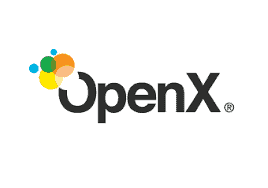
OpenX is a leading SSP (Supply-Side Platform) in the programmatic advertising industry. With its robust optimization algorithms and advanced targeting capabilities, OpenX has established itself as a trusted solution for publishers looking to maximize their revenue.
One of the key features of OpenX is its real-time bidding and header bidding solutions. These technologies enable publishers to connect with multiple demand sources simultaneously, allowing them to achieve higher ad fill rates and increase their overall revenue. By leveraging real-time bidding, publishers can access a wide range of advertisers and optimize their ad inventory in real-time, ensuring maximum profitability.
OpenX’s reporting and analytics tools are another valuable asset for publishers. These tools provide detailed insights into ad performance, revenue, and user engagement. Publishers can analyze this data to make informed decisions and optimize their ad operations accordingly. By leveraging these data-driven insights, publishers can identify trends, target specific audience segments, and optimize their monetization strategies to achieve the best possible results.
Xandr

Xandr, formerly known as AppNexus, is a popular SSP that offers publishers a comprehensive suite of tools to manage and monetize their ad inventory. The platform provides advanced bidding and optimization capabilities, allowing publishers to increase their revenue by selling their impressions to the highest-bidding advertisers.
Xandr’s platform also includes innovative features like audience segmentation and targeting, which enable publishers to reach their desired audience more effectively. With its real-time reporting and analytics, publishers can gain valuable insights into their ad performance and make informed decisions to maximize their revenue potential.
Sovrn
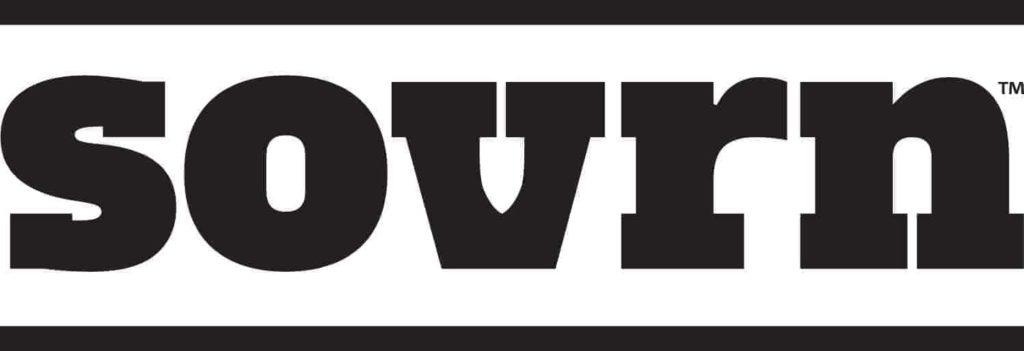
Sovrn is an SSP that focuses on empowering publishers with a wide range of monetization solutions. The platform offers header bidding, allowing publishers to access multiple demand sources simultaneously and increase competition for their ad inventory.
Sovrn’s publisher-friendly tools and intuitive interface make it easy for publishers of all sizes to manage their ad operations effectively. The platform also provides detailed reporting and analytics, helping publishers understand their ad performance and identify areas for improvement.
SpotX
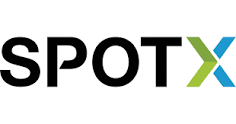
SpotX is another leading SSP that offers publishers a suite of powerful ad monetization tools. With SpotX, publishers can access a global marketplace of advertisers and demand sources, maximizing their revenue potential.
The platform provides header bidding solutions and real-time reporting, enabling publishers to optimize their ad inventory and make data-driven decisions. SpotX also offers various ad formats, including video and CTV, allowing publishers to diversify their ad offerings and reach their audiences across multiple channels.
Index Exchange
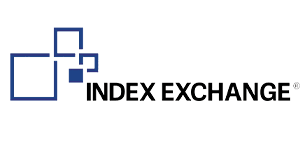
Index Exchange is a solid SSP (Supply-Side Platform) due to several key factors.
Firstly, it boasts a robust and scalable infrastructure that can handle high volumes of programmatic transactions efficiently. Its advanced technology ensures real-time bidding and seamless ad serving, resulting in optimal revenue generation for publishers.
Secondly, Index Exchange offers comprehensive data analytics and reporting tools, empowering publishers to make informed decisions and maximize their monetization strategies. Moreover, the platform maintains a wide network of premium demand partners, ensuring access to diverse and high-quality demand sources. Index Exchange prioritizes transparency and brand safety, implementing stringent measures to protect publishers’ inventory and maintain a trustworthy ecosystem.
Lastly, its dedicated support team provides prompt assistance, fostering strong relationships and ensuring smooth operations. Overall, Index Exchange’s technological prowess, data-driven approach, strong demand partnerships, transparency, and reliable support make it a solid choice as an SSP.
Magnite
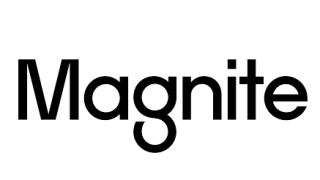
Magnite stands out among other SSPs due to several unique aspects. Firstly, its focus on video advertising sets it apart. Magnite specializes in delivering high-quality video inventory, allowing publishers to capitalize on the growing demand for video ads. This specialization enables Magnite to offer advanced video ad formats, targeting options, and optimization capabilities, thereby maximizing revenue potential for publishers in the video space.
Also, Magnite’s header bidding solution, known as Prebid, is highly regarded in the industry. Prebid is an open-source header bidding wrapper that allows publishers to integrate multiple demand sources simultaneously, resulting in increased competition and higher yield for their inventory. This technology empowers publishers to access a diverse range of demand partners, leading to improved monetization and performance.
PubMatic
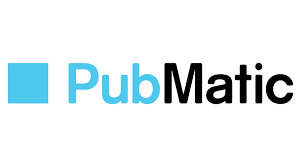
PubMatic leverages advanced programmatic technology to optimize ad delivery and maximize yield for publishers. Its sophisticated algorithms and real-time bidding capabilities ensure that the right ads are served to the right audience at the right time, leading to improved monetization outcomes.
Other than that, PubMatic prioritizes transparency and brand safety. It employs stringent measures to prevent fraudulent activities and ad quality issues, ensuring a trustworthy environment for publishers and advertisers. By maintaining brand safety standards, PubMatic protects publishers’ inventory and maintains the integrity of their digital assets.
Amazon Publisher Services (APS)

Amazon Publisher Services (APS) offers several unique benefits for publishers that set it apart from other SSPs (Supply-Side Platforms). Firstly, APS provides access to Amazon’s vast and highly valuable advertising demand, including Amazon Advertising and Amazon DSP. This access opens up a massive pool of high-quality demand, enabling publishers to monetize their inventory with premium advertisers and potentially increase their revenue.
Secondly, APS leverages Amazon’s advanced machine learning and AI capabilities to optimize ad delivery and maximize yield for publishers. By leveraging sophisticated algorithms, APS can deliver highly relevant and personalized ads to the right audience at the right time, increasing engagement and revenue potential.
Additionally, APS offers seamless integration with Amazon’s advertising ecosystem, including services such as Amazon Publisher Services Header Bidding (formerly known as Transparent Ad Marketplace or TAM) and Unified Ad Marketplace (UAM). These integrations streamline managing and monetizing ad inventory, providing publishers with a unified and efficient solution.
Sharethrough
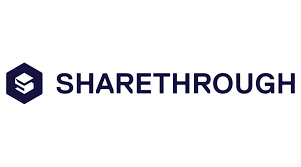
Sharethrough specializes in native advertising and offers a programmatic platform that enables publishers to monetize their inventory through native ad placements. Sharethrough’s SSP facilitates the buying and selling of native ad inventory, connecting publishers with demand partners such as advertisers and agencies. With its focus on native advertising, Sharethrough provides publishers with tools and solutions to integrate native ads into their content, delivering a more seamless and engaging user experience. Through its SSP, Sharethrough helps publishers optimize their native ad inventory, maximize revenue, and provide targeted and relevant native ad placements to their audiences.
Conclusion
SSPs are a powerful tool for publishers to manage and optimize their ad inventory efficiently. By automating the selling process, connecting to multiple demand sources, offering pricing control, and providing valuable insights, SSPs enable publishers to maximize their revenue and focus on creating engaging content for their audience. Want to connect with the best SSPs without any hassles? Get started here!
source https://www.monetizemore.com/blog/best-ssp/


0 Comments